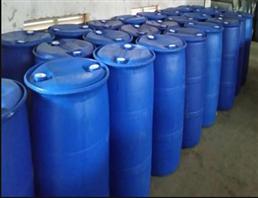
Turpentine oil
| Price | $7 |
| Package | 1KG |
| Min. Order: | 1KG |
| Supply Ability: | 100KG |
| Update Time: | 2020-01-01 |
Product Details
| Product Name: Turpentine oil | CAS No.: 8006-64-2 |
| Min. Order: 1KG | Purity: 99% |
| Supply Ability: 100KG | Release date: 2020/01/01 |
JD 607 Judy Liang Judy@coreychem.com
Product Name: Turpentine oil
Synonyms: Turpentine oil kf-wang(at)kf-chem.com;turpentineoil,rectifier;turpentinespirits;turpentinesteamdistilled;turps;woodturpentine;pine cone oil;TRIETHYL CITRATE 99+% FCC
CAS: 8006-64-2
MF: C12H20O7
MW: 276.283
EINECS: 232-350-7
Product Categories: INORGANIC & ORGANIC CHEMICALS;-;Cosmetic Ingredients & Chemicals;Plant extracts;Herb extract;Essential oil
Mol File: 8006-64-2.mol
Turpentine oil Structure
Turpentine oil Chemical Properties
Melting point −55 °C(lit.)
Boiling point 153-175 °C(lit.)
density 0.86 g/mL at 25 °C(lit.)
vapor density 4.84 (−7 °C, vs air)
vapor pressure 4 mm Hg ( −6.7 °C)
FEMA 3089 | TURPENTINE, STEAM DISTILLED (PINUS SPP.)
refractive index n20/D 1.515
Fp 86 °F
optical activity [α]20/D 40 to +48°
Stability: Stable. Flammable. Incompatible with chlorine, strong oxidizers.
EPA Substance Registry System Turpentine, oil (8006-64-2)
Safety Information
Hazard Codes Xn,N
Risk Statements 36/38-43-65-51/53-20/21/22-10
Safety Statements 36/37-46-61-62
RIDADR UN 1299 3/PG 3
WGK Germany 2
RTECS YO8400000
HazardClass 3.2
PackingGroup III
HS Code 38051000
Hazardous Substances Data 8006-64-2(Hazardous Substances Data)
MSDS Information
Provider Language
Turpentine oil English
SigmaAldrich English
Turpentine oil Usage And Synthesis
Description Turpentine oil is a kind of fluid isolated from live trees, mainly pines. It consists of terpenes including monoterpenes, alpha-pinene, beta-pinene and some amount of careen, camphene, dipentene, and terpinolene. It can be used as a solvent and as a source of materials for organic synthesis. For its application in solvent, it can be used for thinning oil-based paints that are useful for the manufacturing of varnishes. In organic synthesis, it can be used for the synthesis of fragrant chemical compounds such as camphor, linalool and alpha-terpineol. It can also be used for large-scale synthesis of bundles of aligned carbon nanotubes. It can also be used as natural flavoring agent as food additive. Moreover, it can be used to synthesize pesticide as well as be used to facilitate the endodontic retreatment.
Chemical Properties Turpentine is oleorosin extracted from trees of pinus (pinacae). It is a yellowish, opaque, sticky mass with a characteristic odor and taste. It is used extensively in different industries associated with the manufacturing of polishes, grinding fl uids, paint thinners, resins, degreasing solutions, clearing materials, and ink making. The two primary uses of turpentine in industry are as a solvent and as a source of materials for organic synthesis. As a solvent, turpentine is used for thinning oil-based paints for producing varnishes and as a raw material in the chemical industry.
Chemical Properties colourless liquid with paint-like odour
Chemical Properties Turpentine is the oleoresin from species of Pinus Pinacea trees. The crude oleoresin (gum turpentine) is a yellowish, sticky, opaque mass and the distillate (oil of turpentine) is a colorless, volatile liquid with a characteristic odor. Chemically, it contains: alpha-pinene; betapinene; camphene, monocyclic terpene; and terpene alcohols.
Chemical Properties Balsam turpentine is the oleo-gum-resin obtained by incisions made on the trunks of several trees belonging to the genus Pinus. The common American turpentine comes from P. palustris. Crude turpentine contains 75 to 90% resin and 10 to 26% oil. It is of paramount importance to use special techniques in making incisions, because the tree otherwise may die in a short time. A gum (gum turpentine) consisting of white incrustations is formed around the incisions in the tree. Rosin is the resinous residue of the distillation of turpentine. There are several varieties of rosin, varying in color from the palest amber to nearly black and from translucent to opaque, depending on the turpentine source. Colophony is the name of the common rosin variety. The part used is the oleo-gum-resin (turpentine balsam). Turpentine has a penetrating and characteristic odor and a pungent, bitter taste.
Chemical Properties Turpentine oil is obtained by steam distillation of the oleo-gum-resin. It has a warm, balsamic, refreshing odor of turpentine. The oil must be absolutely free of water to avoid oxidation of α- and β-pinene (approximately 80% of the oil).
Physical properties Turpentine steam-distilled is a clear, colorless, mobile liquid.
Uses Solvent and thinner for paints, varnishes, polishes. In manufacture of aroma chemicals such as camphor, myrcene, linalool; source of pine oil.
Production Methods Gum turpentine is the steam-volatile fraction of pine tree pitch.Wood turpentine is obtained from waste wood chips or sawdust. Sulfate turpentine is a by-product in paper manufacture.
General Description A clear colorless liquid with a characteristic odor. Flash point 90-115°F. Obtained from naphtha-extraction of pine stumps. Less dense than water and insoluble in water. Hence floats on water. Vapors are heavier than air.
Air & Water Reactions Highly flammable. Insoluble in water.
Reactivity Profile WOOD TURPENTINE reacts with oxidizing agents. Calcium hypochlorite was placed in a turpentine container, thought to be empty. Reaction with the residual turpentine resulted in an explosion within a few minutes [Benson 1967]. Reacts violently with chromic anhydride [Haz. Chem. Data 1967 p. 68]. Reacts with stannic chloride producing heat and sometimes flame [Mellor 7:430 1946-47]. May also react exothermically with reducing agents to produce gaseous hydrogen.
Health Hazard Occupational exposures to turpentine cause adverse health effects on absorption through the skin, lungs, and intestine. The vapor of turpentine causes severe irritation to the nose, eyes, and respiratory system has a whole. Aspiration of liquid turpentine causes direct irritation to the lungs and results in pulmonary edema and hemorrhage. It also causes dermatitis, eczema, and hypersensitivity among occupational workers. Splashing of liquid turpentine in the eyes causes corneal burns. Turpentine is also known to cause skin eruption, irritation to the gastrointestinal tract, kidney and bladder damage, delirium, ataxia, and benign skin tumor.
Safety Profile An experimental poison by intravenous route. Moderately toxic to humans by ingestion. Mildly toxic experimentally by ingestion and inhalation. Human systemic effects by ingestion and inhalation: conjunctiva irritation, other olfactory and eye effects, hallucinations or distorted perceptions, antipsychotic, headache, pulmonary, and kidney changes. A human eye irritant. Irritating to skin and mucous membranes. Can cause serious irritation of kidneys. Questionable carcinogen with experimental tumorigenic data. A common air contaminant. A very dangerous fire hazard when exposed to heat or flame; can react vigorously with oxidizing materials. Avoid impregnation of combustibles with turpentine. Keep cool and ventilated. Spontaneous heating is possible. Moderate explosion hazard in the form of vapor when exposed to flame; can react violently with Ca(OCl)2, Cl2, CrO3, Cr- (OCl)2, SnCl4, hexachloromelamine, trichloromelamine. To fight fire, use foam, CO2, dry chemical. When heated to decomposition it emits acrid smoke and irritating fumes.
Potential Exposure Turpentines have found wide use as chemical feedstock for the manufacture of floor, furniture, shoe, and automobile polishes; camphor, cleaning materials; inks, putty, mastics, cutting and grinding fluids; paint thinners; resins, and degreasing solutions. Recently, alpha-and beta-pinenes, which can be extracted, have found use as volatile bases for various compounds. The components d-α-pinene and 3-carene, or their hydroperoxides, may be the cause of eczema and toxic effects of turpentine.
Carcinogenicity When turpentine was applied to the skin, tumor growth was promoted in the rabbit, but not in the mouse.
Shipping UN1299 Turpentine, Hazard Class: 3; Labels: 3- Flammable liquid.
Incompatibilities Forms an explosive mixture with air. Violent reaction with strong oxidizers, especially chlorine; chromic anhydride; stannic chloride; chromyl chloride.
Waste Disposal Dissolve or mix the material with a combustible solvent and burn in a chemical incinerator equipped with an afterburner and scrubber. All federal, state, and local environmental regulations must be observed.
Precautions During handling of turpentine, occupational workers should always use protective clothing, rubber gloves, and face masks to avoid adverse health effects to the skin and respiratory tract.
References Kalpana Awasthi, et al. "Large scale synthesis of bundles of aligned carbon nanotubes using a natural precursor: turpentine oil." Journal of Experimental Nanoscience 5.6(2010):498-508.
Bai, Yun. "The general situation of flavor from turpentine oil." China Food Additives (2006).
Pakdel, H, S. Sarron, and C. Roy. "alpha-Terpineol from hydration of crude sulfate turpentine oil. " Journal of Agricultural & Food Chemistry 49.9(2001):4337-41.
Dong-Mei, L. I., et al. "Study on synthesis of high purity α-terpineol from turpentine oil." Modern Chemical Industry (2008).
Armstrong, Henry E. "XXXV.—Studies of the terpenes and allied compounds. The nature of turpentine oils, including that obtained from Pinus khasyana." Journal of the Chemical Society Transactions 59:311-315.
Guilbert, J., et al. "Anti-flatulence treatment and status epilepticus: a case of camphor intoxication." Emergency Medicine Journal Emj 24.12(2007):859.
Qin, Lang, and Y. M. Wang. "Application of Turpentine Oil in Synergist and Pesticide and Its Progress." Fine & Specialty Chemicals (2005).
Kaplowitz, G. J. "Clinical uses of rectified turpentine oil." International Endodontic Journal 29.2(1996):93.
Turpentine oil Preparation Products And Raw materials
Preparation Products Rosin-->Iron oxide red phenolic antirust paint-->Linalool-->Phenolic resin paint-->Camphor-->Cinene-->TERPINEOL-->DL-Isoborneol-->(-)-alpha-Terpineol-->TOXAPHENE-->Pine oil-->Camphene-->Isobornyl acetate-->Terpinyl acetate-->Penetrating agent 5881D-->2-ETHYLBUTYL METHACRYLATE-->alpha-Pinene-->4-Allylanisole-->ALPHA-TERPINENE-->Borneol -->beta-Pinene -->Dihydromyrcene-->ABIETIC ACID-->Bornyl acetate-->L(-)-Borneol
Company Profile Introduction
Established in 2014,Career Henan Chemical Co. is a manufacturerspecializing in the sale of fine chemicals.
Mainly deals in the sales of:
Pharmaceutical intermediates
OLED intermediates:
Pharmaceutical intermediates;
OLED intermediates;
You may like
Recommended supplier
| Product name | Price | Suppliers | Update time | |
|---|---|---|---|---|
| $10.00/1KG |
VIP6Y
|
Hebei Chuanghai Biotechnology Co., Ltd
|
2024-11-29 | |
| $100.00/1drum |
Hebei Fengqiang Trading Co., LTD
|
2023-09-04 | ||
| $0.00/25KG |
VIP5Y
|
Hebei Mujin Biotechnology Co.,Ltd
|
2023-06-29 | |
| $0.00/1kg |
VIP2Y
|
Hebei Kingfiner Technology Development Co.Ltd
|
2023-06-27 | |
| $30.00/1ASSAYS |
Shanghai Yunao International Trade Co., Ltd
|
2022-07-13 | ||
| $1.50/1g |
VIP3Y
|
Shaanxi Didu New Materials Co. Ltd
|
2022-05-20 | |
| $15.00/1KG |
Zhuozhou Wenxi import and Export Co., Ltd
|
2021-07-10 | ||
| $0.00/1KG |
VIP4Y
|
WUHAN FORTUNA CHEMICAL CO., LTD
|
2021-07-02 | |
| $11.00/1KG |
VIP4Y
|
Baoji Guokang Bio-Technology Co., Ltd.
|
2021-06-07 | |
| $2.55/25KG |
Chemwill Asia Co.,Ltd.
|
2019-08-16 |
- Since: 2014-12-17
- Address: Room 702, Floor 7, Building 10, National University Science Park, High-Tech Zone, Zhengzhou City, H
INQUIRY










 China
China